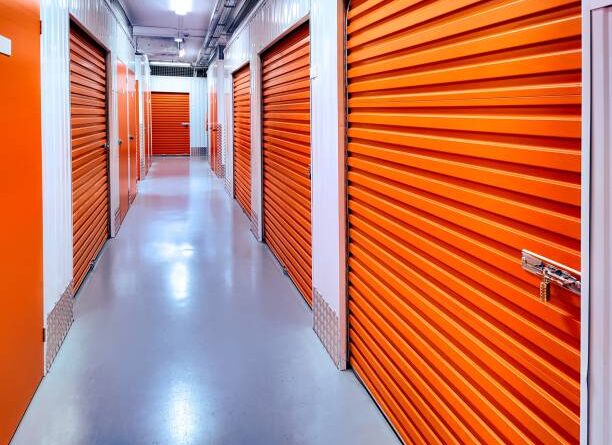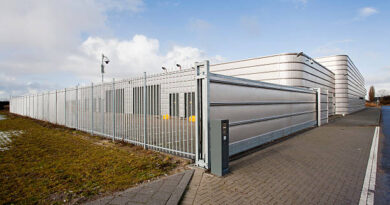Climate Factors That Make Climate Controlled Storage Essential for Electronics and Artwork
Electronics and artwork may share nothing in design, but they face the same vulnerabilities in unstable storage environments. The forces that damage them aren’t always visible—they work quietly through air, humidity, and temperature shifts. For anyone considering storage units near me, understanding these climate risks explains why controlled environments matter more than extra space alone.
Stopping Temperature Swings That Stress Internal Electronic Components
Rapid temperature changes force circuit boards, microchips, and solder joints to expand and contract at different rates. Over time, this uneven movement creates micro-fractures in connections, breaks conductive pathways, and shortens device lifespan. Electronics that power on just fine before storage can begin failing months later when internal damage finally becomes noticeable.
Controlled storage removes the shock cycle. A stable range prevents components from breathing in and out with the weather, especially in regions where daytime and nighttime temperatures can change fast. This matters most for amplifiers, gaming systems, computers, audio receivers, and vintage electronics built with older solder blends that were never designed for high fluctuation environments.
Avoiding Condensation That Leads to Corrosion and Mold Damage
Condensation forms when warm air touches cold internal surfaces—like metal casings, monitor backs, and hardware boards. That thin, invisible moisture layer invites oxidation, which slowly eats at metal contact points, connectors, and internal wiring. The same moisture fuels mold growth inside speaker boxes, storage cases, and device vents where airflow is limited.
A dry, conditioned storage unit space prevents temperature overlap that creates condensation in the first place. Many device losses blamed on “age” are really long-term moisture damage that went undetected. Once corrosion spreads, replacements are often impossible for discontinued or vintage electronics, making prevention the safest option.
Protecting Delicate Materials from Expanding and Contracting
Artwork backing, instrument bodies, wooden frames, and composite electronics housings are all porous materials that react to climate. They absorb air moisture when humidity rises, then shrink when humidity drops, creating a cycle of dimensional movement. Even small expansions cause screws to loosen, materials to bow, and bonded layers to separate.
A climate stable environment stops that repetitive material fatigue. Electronic housings remain fitted, art canvases stay taut, and instrument seams hold longer. This preservation isn’t just cosmetic—it protects alignment, calibration, and mechanical integrity that cannot always be corrected later.
Shielding Artwork Layers from Cracking Due to Dry Air Shifts
Painted art, gallery prints, and layered mixed-media pieces contain multiple coatings that dry at different rates. Excessively dry environments pull residual moisture out of paint films and varnish unevenly, causing hairline fractures known as crazing. These cracks permanently alter surface texture and light reflection, especially on oil and acrylic pieces. Canvas art suffers a second threat from dryness—loss of flexibility. As fibers harden, slight movement or vibration during handling can snap stretched fibers and weaken attachment edges. Protected storage dampens extreme dryness, keeping artwork layers cohesive and less fragile over time.
Keeping Adhesive-based Parts from Weakening in Heat Stress
Heat does more than warm a room—it destabilizes adhesives. Internal components held by glue, pressure bonding, or resin seals begin to soften under sustained heat exposure. In electronics, this affects thermal pads, screen bonding, gasket seals, and layered insulation. In artwork, glue holding matting, backing boards, and mounting materials can deform or fail.
Unlike mechanical fasteners, adhesives cannot be retightened once compromised. The safest course is never letting them reach weakening conditions in the first place. Stable-temperature storage ensures bonding materials stay within their designed tolerance range and do not separate, slide, or off-gas chemicals that can fog nearby surfaces.
Reducing Airborne Moisture That Clouds Lenses and Screens
Cameras, optical sensors, projector lenses, VR headsets, and even flat screens carry internal surfaces that fog when exposed to humid air. That micron-thin fog layer doesn’t evaporate cleanly—it leaves behind mineral residue invisible at first, but performance-altering over time. This residue reduces clarity, blurs output, and scatters light across optics. Ambient humidity control is the only long-term protection. Device owners sometimes try silica packs or closed containers, but those only delay saturation. A monitored, conditioned environment removes moisture at the source, maintaining optical clarity without risky DIY humidity balancing.
Blocking Dust Attraction Amplified by Static in Dry Conditions
Air that becomes too dry creates static buildup on plastic, glass, vinyl, and coated artwork surfaces. Static actively pulls dust from the air, binding it to screens, circuit boards, and framed pieces. Unlike loose dust, static-charged dust resists removal and often smears during cleaning attempts, risking microfiber scratches or micro-abrasions.
Balanced humidity reduces static charge, stopping dust adhesion before it begins. The result is cleaner surfaces, safer handling, and less frequent cleaning—important for stored items that may go months without being accessed. Electronics stored in controlled environments stay maintenance-ready instead of contaminant-coated.
Preserving Color Integrity Against Heat-accelerated Fading
Color pigments—whether in inks, paints, film, or display screens—break down faster under high temperatures. Heat speeds photochemical reactions that bleach tones, dull vibrancy, and shift hues permanently. OLED and LCD displays are especially sensitive, with color degradation compounding when heat combines with darkness and inactivity.
Art pigments face the same chemical pressure. Dyes and paints destabilize faster when stored in warm air pockets with trapped heat. Even without direct light exposure, heat alone can fade prints, posters, canvas pieces, and specialty inks. By maintaining cooler, stable conditions, long-term color fidelity remains intact.
Protecting high-value or irreplaceable items requires more than a locked door—it requires an environment designed around preservation rather than convenience. For those searching storage units near me that maintain reliable climate controlled storage, Storage Partner offers spaces built to keep electronics and artwork protected against the hidden damage caused by temperature and humidity extremes.




